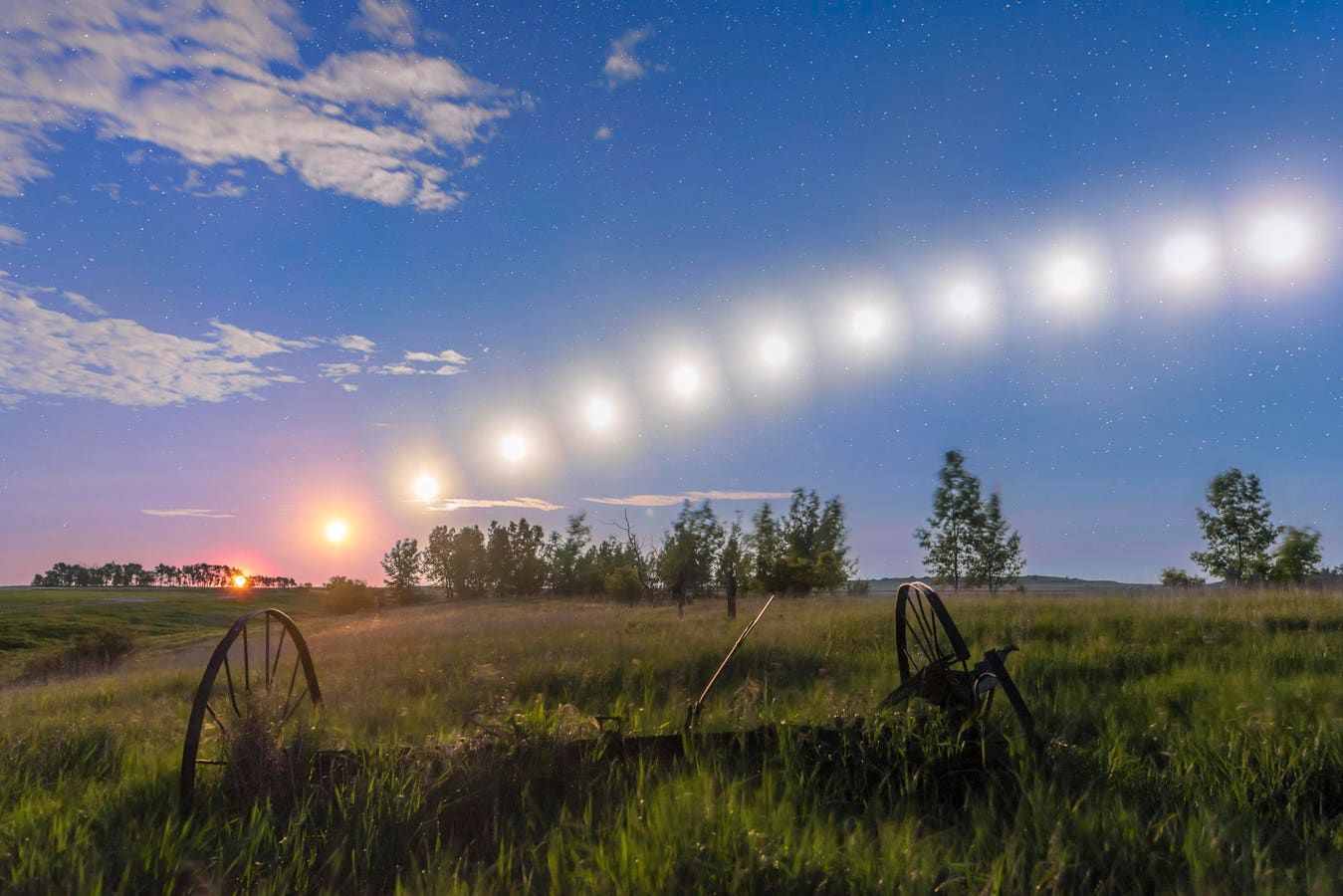Tonight’s strawberry moon will be the lowest-hanging for 19 years. (Photo by: Alan Dyer/VW Pics/UIG … More
Will you see tonight’s full strawberry moon? Best viewed rising in the southeast at moonrise where you are on Tuesday, June 10, this year’s June full moon is the lowest-hanging of the year — hugging the southern horizon in a rare spectacle that won’t return until 2043.
This dramatic sight is caused by a major lunar standstill, an 18.6-year cycle that sees the moon’s rising and setting points at their most extreme. The phenomenon, marked by some ancient monuments, offers a direct link to the skywatching traditions of our ancestors.
The Full Moon In June
The full moon, by definition, is opposite the sun, so it mirrors its position. So when the sun reaches its highest in the day — on the date of the June solstice in the Northern Hemisphere — the closest full moon will be at its lowest, rising in the extreme southeast and setting in the extreme southwest.
That’s what’s happening tonight, but it’s further compounded by the fact that the moon is now in a period called the major lunar standstill or lunistice.
Explained: Major Lunar Standstill
The moon’s orbit around Earth is tilted by five degrees compared to the sun’s path, causing it to sometimes appear above or below the sun’s annual trajectory. That five-degree tilt causes an 18.6-year cycle, during which the moon reaches a point that’s farthest below the sun’s path in June. This is the lowest it can ever go — a major lunar standstill or lunistice. That’s what’s also happening tonight, when the moon’s rising and setting points are at their most extreme, so closer together than usual.
As a consequence, the full strawberry moon will appear to almost skim the southern sky, with the effect most noticeable the farther north you observe from. At about 50 degrees north, the strawberry moon will get no higher than about 10 degrees above south — an unusual occurrence that ancient astronomers in the U.K. and Ireland may have noticed.
Ancient Monuments And The Major Lunar Standstill
Did ancient astronomers pay close attention to where the full moon rose? There is evidence that stone monuments marked the moon’s 18.6 lunar cycle. Some of that evidence is uncertain — for example, there are often 19 stones in the hundreds of stone circles across the U.K., with various alignments possible with standing stones nearby — but in others, it’s more compelling.
Daytime view of the stone circle at Stonehenge, a UNESCO World Heritage site near Amesbury in … More
Stonehenge, England
The central axis of Stonehenge aligns with the setting sun at the winter solstice, but other stones outside the circle, known as Station Stones, align with the moonrise at a major standstill, according to English Heritage.
The corridor of the Cairn of Gavrinis, a megalithic site, on the Island of Gavrinis, in the Morbihan … More
Gavrinis, France
Inside a Neolithic tomb on a small island in Brittany, France, is one of the world’s oldest surviving buildings. During the major lunar standstill, the full moon illuminates one of 29 slabs — the only one made of white quartz — although it also lights up during the winter solstice sunrise, leaving archaeoastronomers unsure, according to Ken Taylor, author of Celestial Geometry.
Moonrise at Callanish Stone Circle on the Isle of Lewis, Outer Hebrides, Scotland
Calanais (Callanish), Scotland
Tonight’s strawberry moon will move just a few degrees above the southern horizon tonight as seen from the Calanais (Callanish) stone circle in the Outer Hebrides, Scotland. This avenue of stones is thought to frame the full moon during the major lunar standstill.
Wishing you clear skies and wide eyes.









